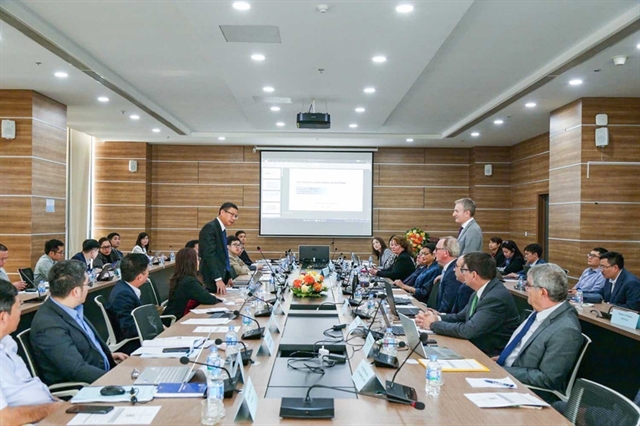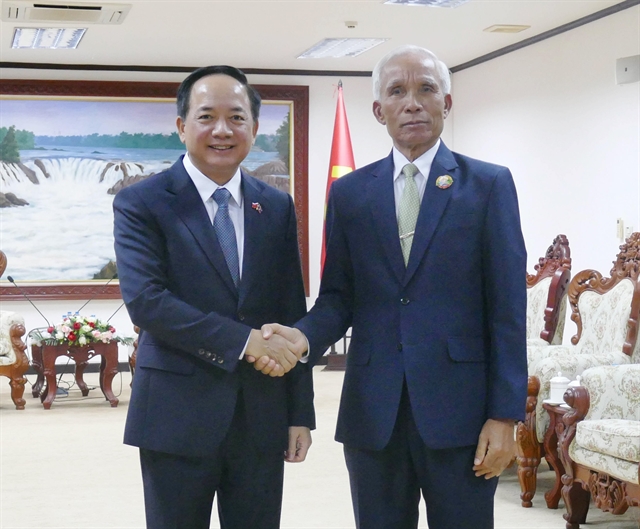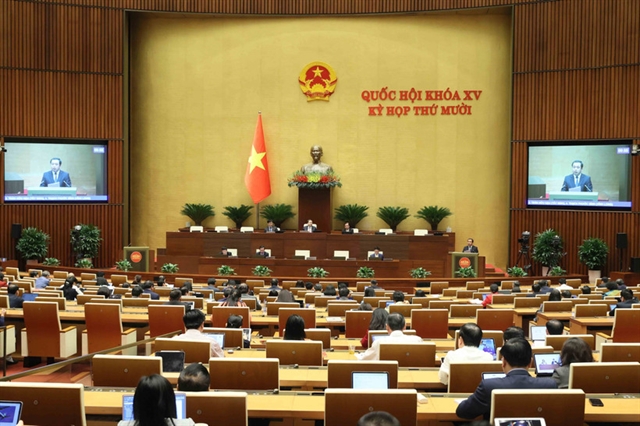 Economy
Economy

 |
| Võ Trí Thành |
*Võ Trí Thành
Việt Nam has recently achieved a significant milestone with the approval of the National Power Development Plan for 2021-30 (better known as the Power Development Plan VIII) by its government. This strategic blueprint marks a very important step in Việt Nam's journey towards a sustainable energy future.
On May 15, Việt Nam's Prime Minister issued Decision No. 500/QĐ-TTg approving the Power Development Plan VIII, which guides the development of the country's power sources and transmission grids between 2021 and 2030, with a vision extending to 2050. This was the result of a multitude of drafts and revisions after almost three years.
The development of the power master plan took place amid a challenging landscape characterised by shifting global energy consumption trends towards reduced carbon emissions. These trends pose obstacles for economies, including Việt Nam, in terms of energy extraction and utilisation. Additionally, geopolitical tensions further necessitate a review of energy and electricity development strategies.
The Power Development Plan VIII plays a crucial role in Việt Nam's National Master Plan and energy development strategy. Its primary objective is to ensure a well-structured distribution of power sources in line with the policies outlined in Resolution 55-NQ/TW. The plan encompasses key goals such as ensuring a sufficient and reliable energy supply, progressively transitioning to clean energy to fulfil the country’s Green Growth Strategy and COP26 commitments, promoting national economic competitiveness and ensuring affordable electricity prices for the population.
Renewable energy sources, including wind, solar and biomass, are given a strong emphasis, as they offer certain potential for cost reduction in electricity production, contributing to national energy security and a successful transition towards clean energy.
The Master Plan expands the scale of renewable energy sources in Việt Nam.
It envisions a shift away from coal-fired power plants after 2030, instead proposing a gradual transition to biomass fuels, ammonia and the development of gas power. The plan also emphasises the complete combustion of hydrogen and ammonia in the long term, with no new LNG power sources planned after 2035.
Renewable energy sources, including hydroelectricity, solar power, wind, and biomass, will experience substantial growth, reaching over 44.4 GW by 2030. The total capacity of renewable energy sources in the energy structure is projected to account for 50.3 per cent by 2030, with renewable energy contributing 36 per cent of electricity generation.
Looking ahead to 2050, coal power sources will no longer be developed, and the capacity of gas power will represent only 7 per cent of the total capacity structure. Renewable energy sources are expected to reach nearly 400 GW, representing 69.8 per cent of the total power capacity.
To balance various energy sources, reduce long-distance transmission and increase the scale of solar, wind, and biomass power sources, the master plan includes different load options and source development plans. It also incorporates various elements to address the complexities of the planning problem.
The endorsement of the Power Development Plan VIII has a favourable impact on the economy, decreasing uncertainty in the business and investment environment. This decision was greeted with enthusiasm by both domestic and foreign investors, particularly those involved in renewable power projects who have eagerly awaited this decision for an extended period.
However, the implementation of this ambitious plan is not without its challenges.
First, implementing the multi-targets of the master plan poses several challenges.
Power development planning is a dynamic and inclusive process, encompassing various scenarios for each period. However, certain targets over multiple periods may not align, such as electricity prices and investments.
One of the primary goals of this electricity master plan is to establish a competitive electricity market. This entails introducing market-oriented mechanisms, promoting fair competition among power producers, and creating an enabling environment for private sector participation. This transition from a state-dominated market to a competitive one is essential for attracting investment, improving efficiency, and reducing electricity costs for consumers.
However, while progress has been made in power transmission and there is some degree of competitiveness in power generation, conflicts of interest still persist. It is essential to foster competition in the retail market and strive for a competitive electricity market with affordable prices.
Implementing such market reforms requires robust regulatory frameworks and strong institutional capacities.
Second, approving this plan necessitates a change in mindset, particularly with a strong emphasis on the implementation process. The escalating demand for electricity, coupled with production targets for the coming years that surpass those of previous decades, highlights the need for a precise, specific and efficient execution mechanism. Current traditional implementation methods entail lengthy timelines that needs to change.
Third, the transition to renewable energy is an important process that requires capital, technology and human resources that Việt Nam cannot do alone, but requires international cooperation.
The master plan needs US$134.7 billion of funding to develop new power plants and power grids between 2021 and 2030. The figures would soar to between $399.2 billion and $523.1 billion by 2050. These investment figures create significant opportunities for foreign energy firms to actively participate in Việt Nam's burgeoning energy sector.
The master plan considers the Just Energy Transition Partnership (JETP), which has played a significant role in the integration of renewable energy within the plan. However, the full realisation of this agreement holds importance as its non-fulfilment may impact the ultimate outcomes of the plan.
Fourth, while mobilising capital presents its challenges, the allocation and expenditure of funds pose an even greater difficulty. Therefore, it is of utmost importance to establish harmonious cooperation and align the interests of all parties involved, demanding commitment from stakeholders.
The Power Development Plan VIII was formulated within a context of various challenges and risks, including the rapid evolution of technology, climate change and geopolitical considerations. In order to navigate these complexities, Việt Nam must ensure the achievement of multiple goals that cannot be addressed in isolation. This necessitates a steadfast commitment from the entire political apparatus, encouraging creativity, adaptation and the implementation of necessary changes. An effective enforcement mechanism is also crucial to facilitate the realisation of these objectives.
*Võ Trí Thành is a senior economist at the Central Institute for Economic Management (CIEM) and a member of the National Financial and Monetary Policy Advisory Council. A doctorate in economics from the Australian National University, Thanh mainly undertakes research and provides consultation on issues related to macroeconomic policies, trade liberalisation and international economic integration. Other areas of interest include institutional reforms and financial systems. He authors Viet Nam News column Analyst’s Pick.




